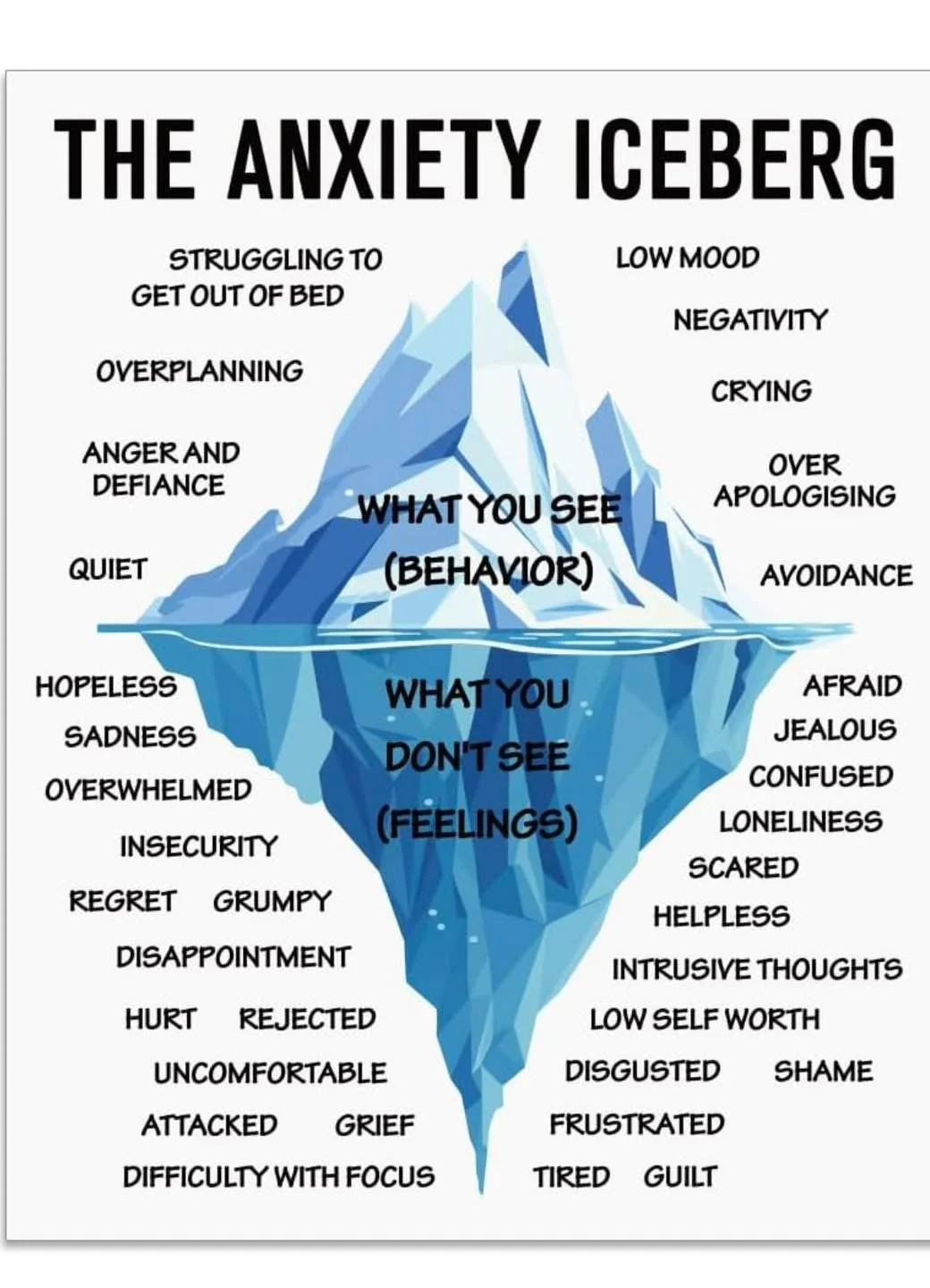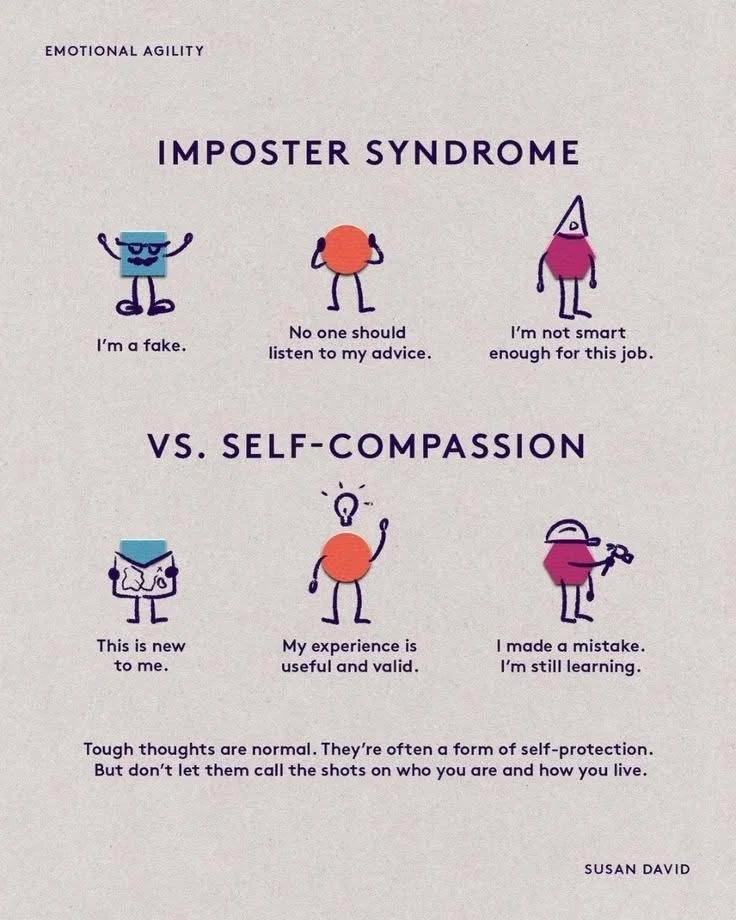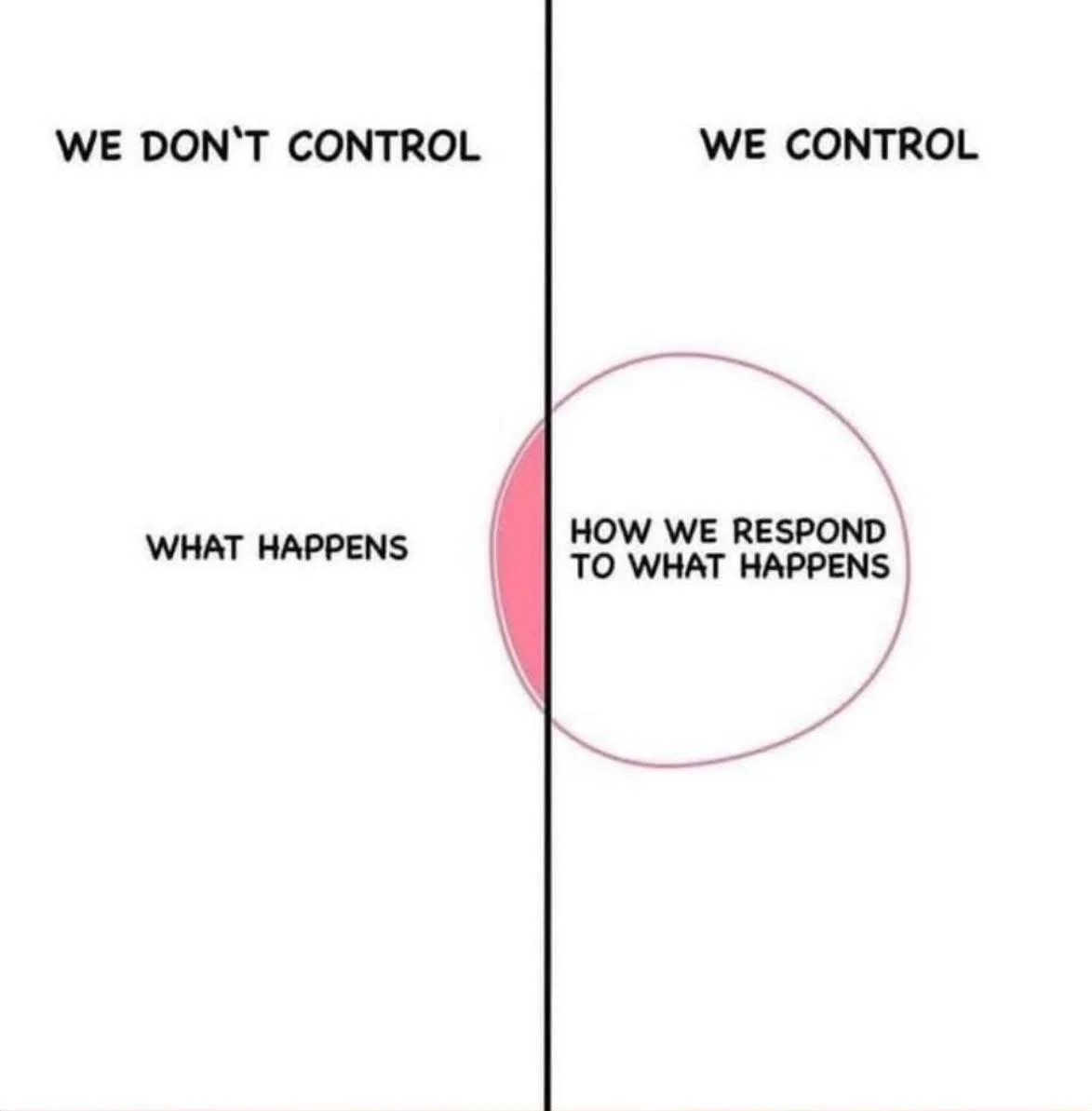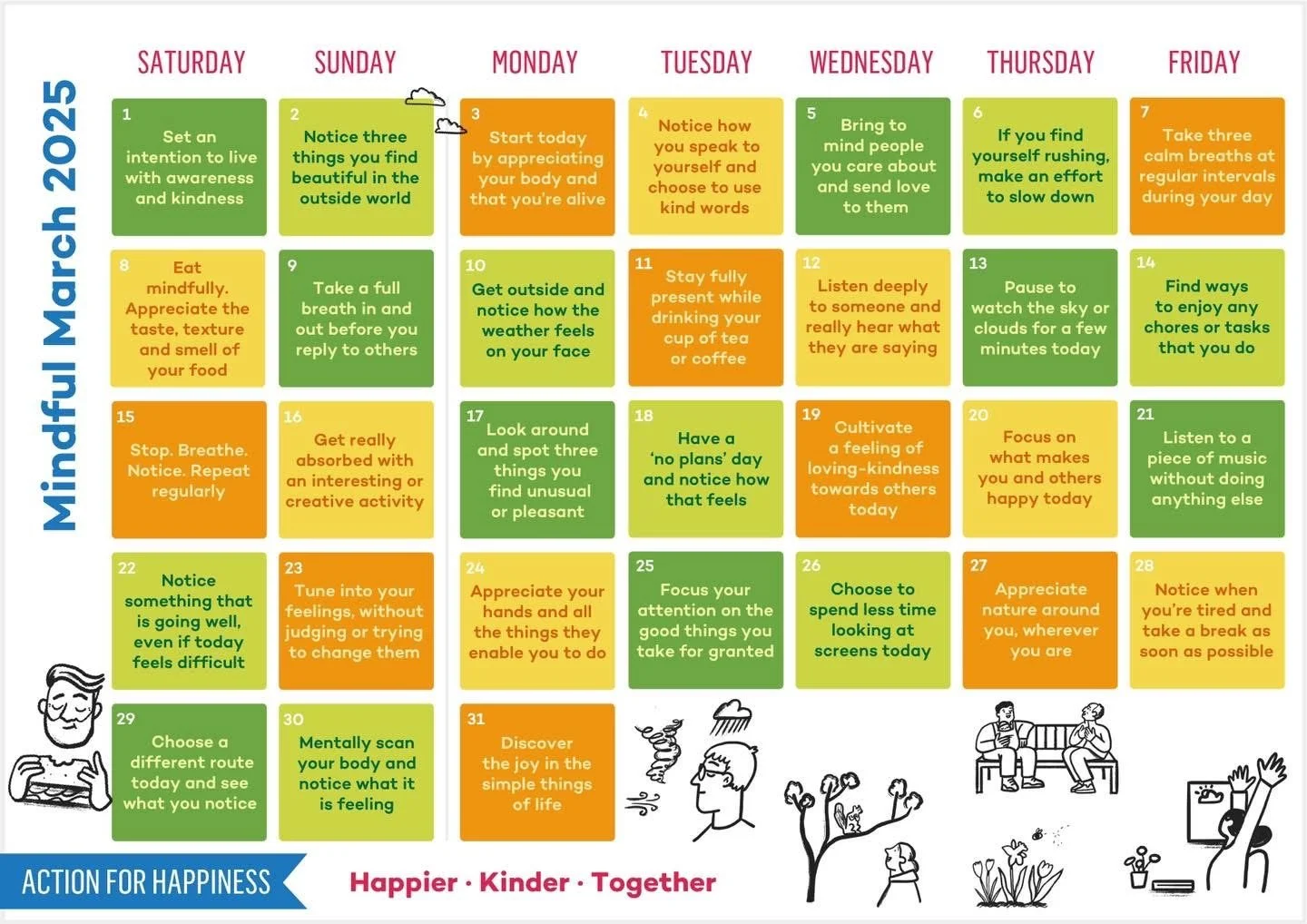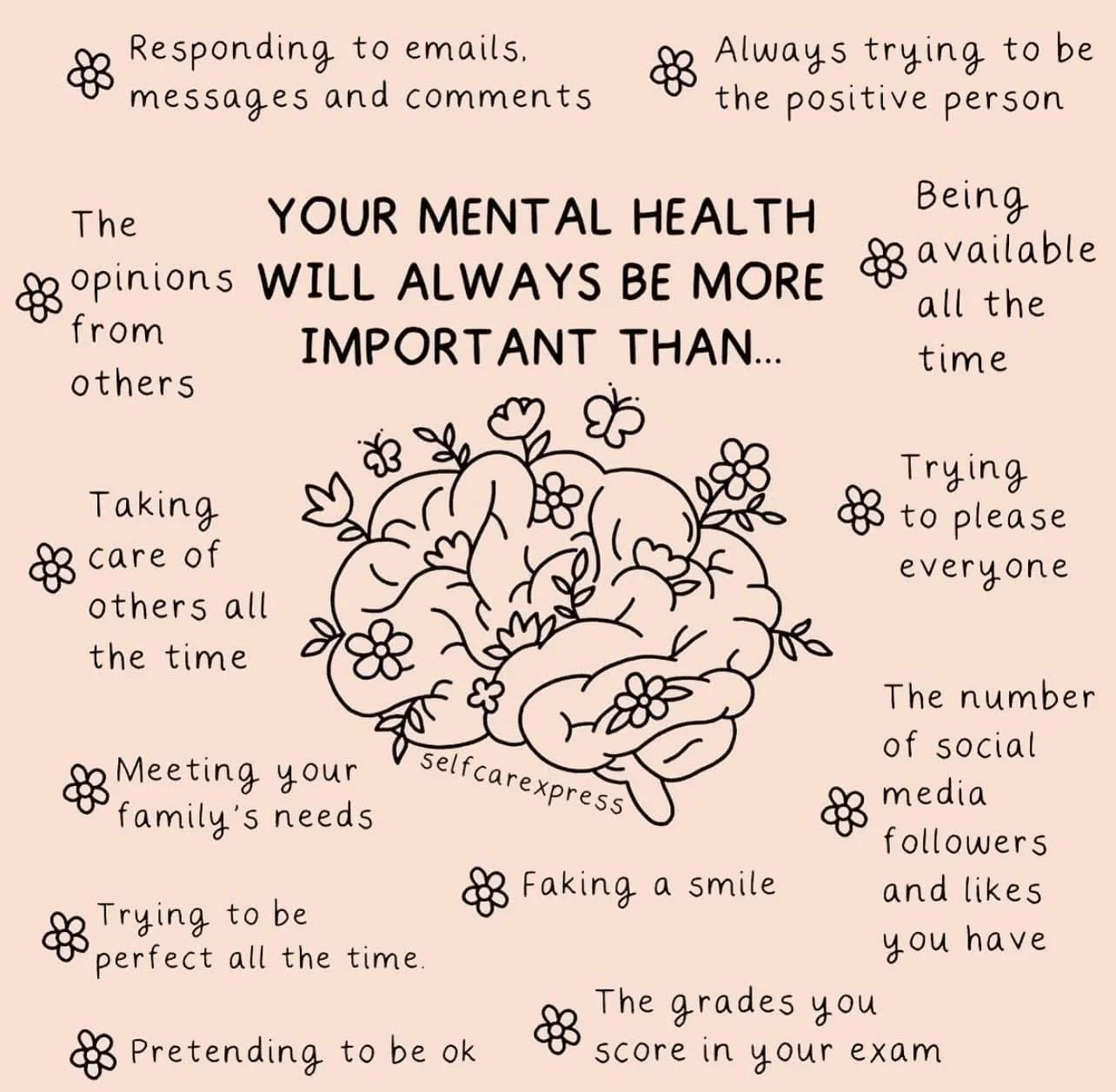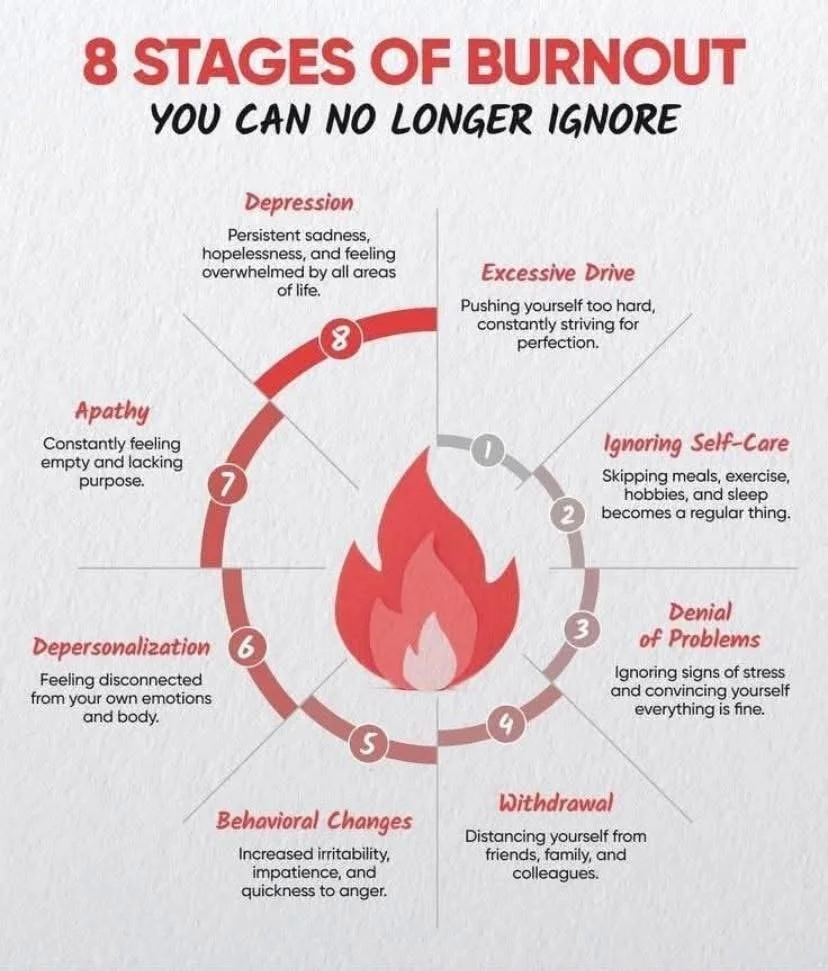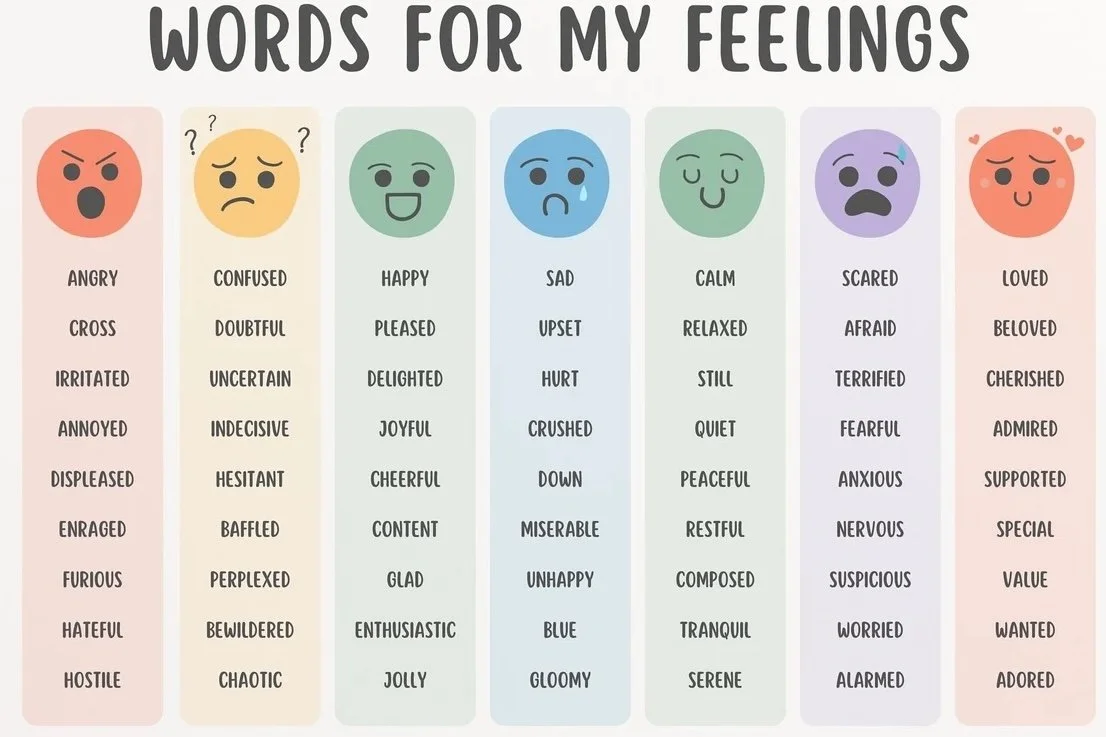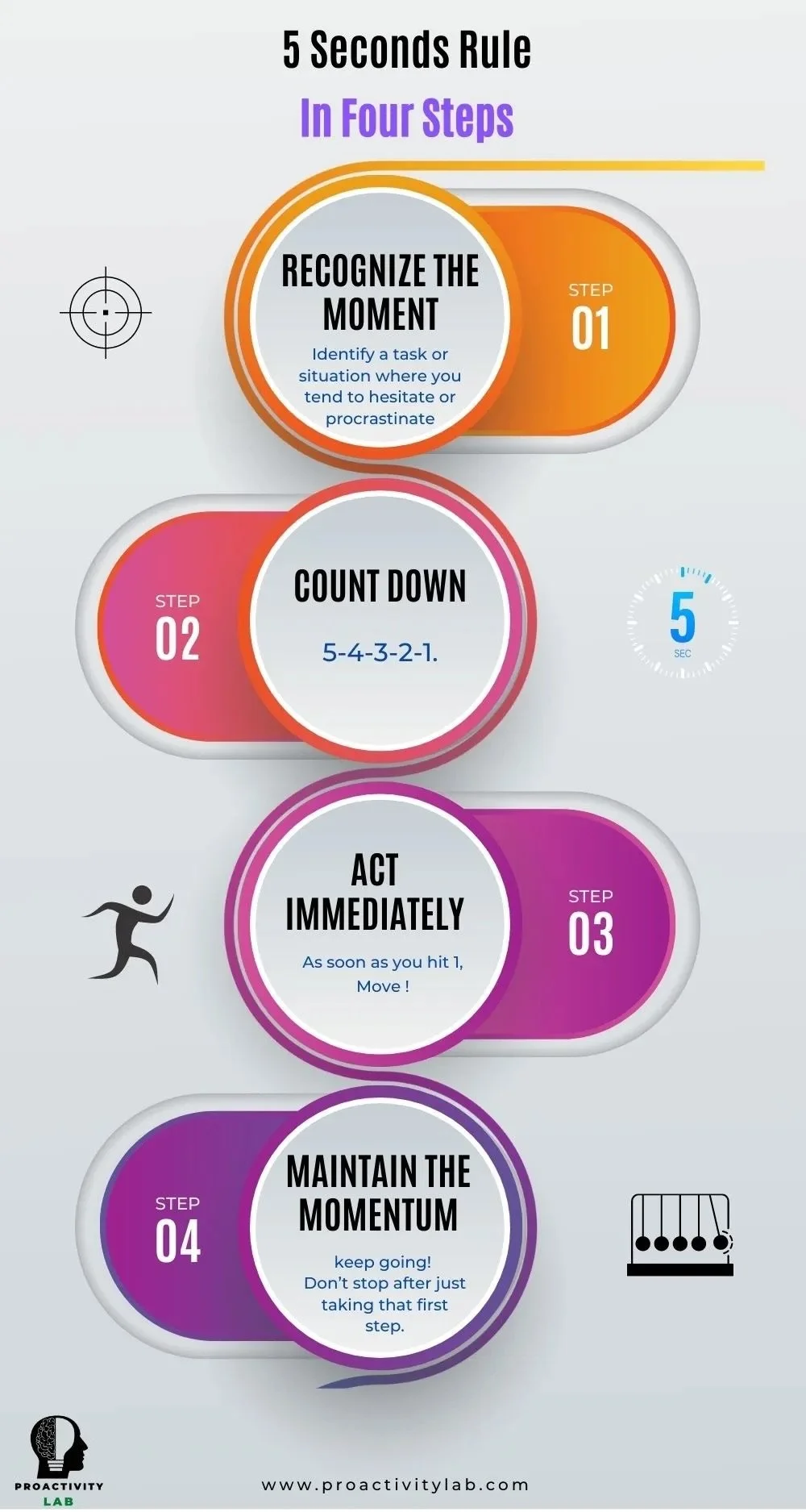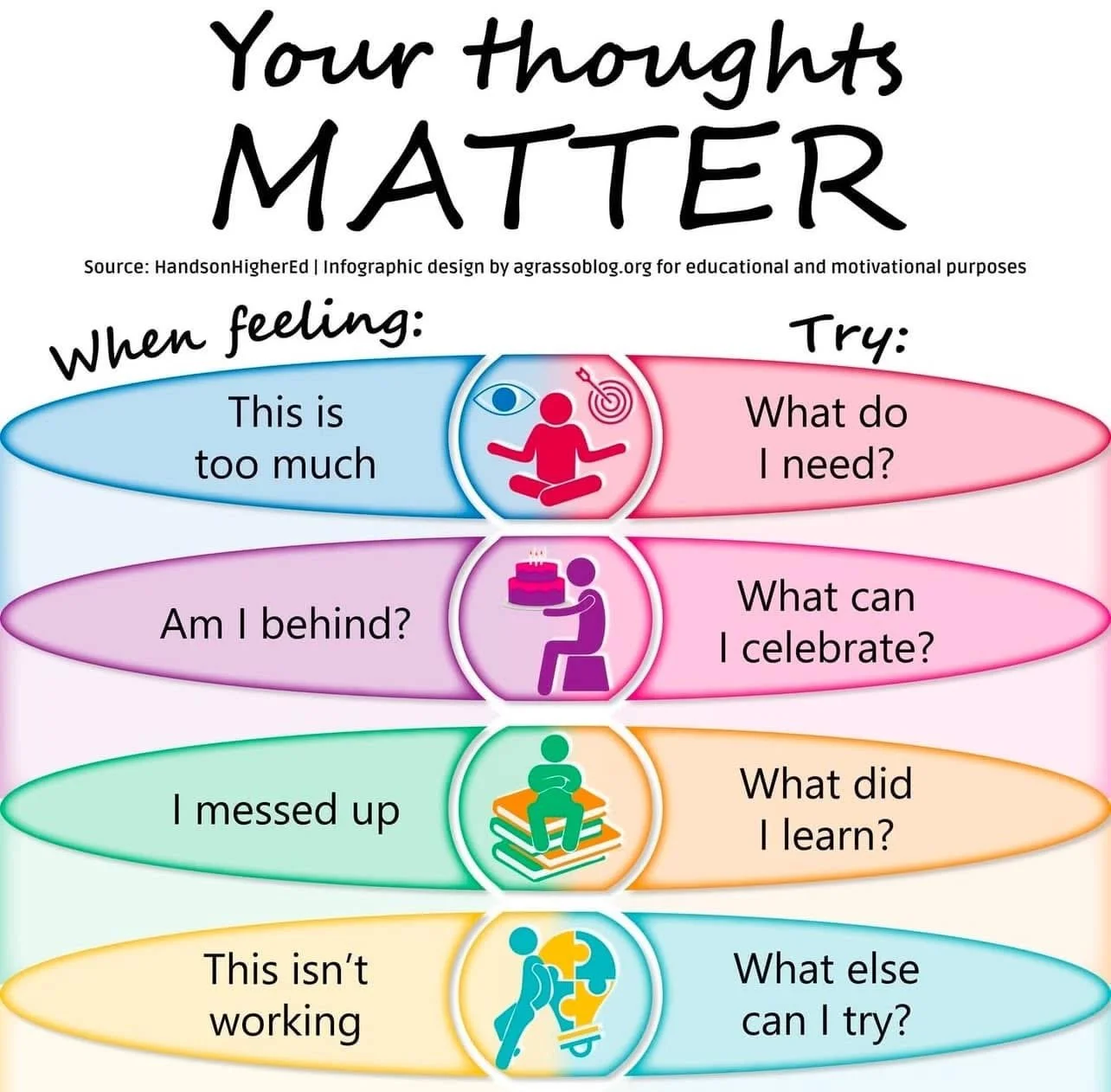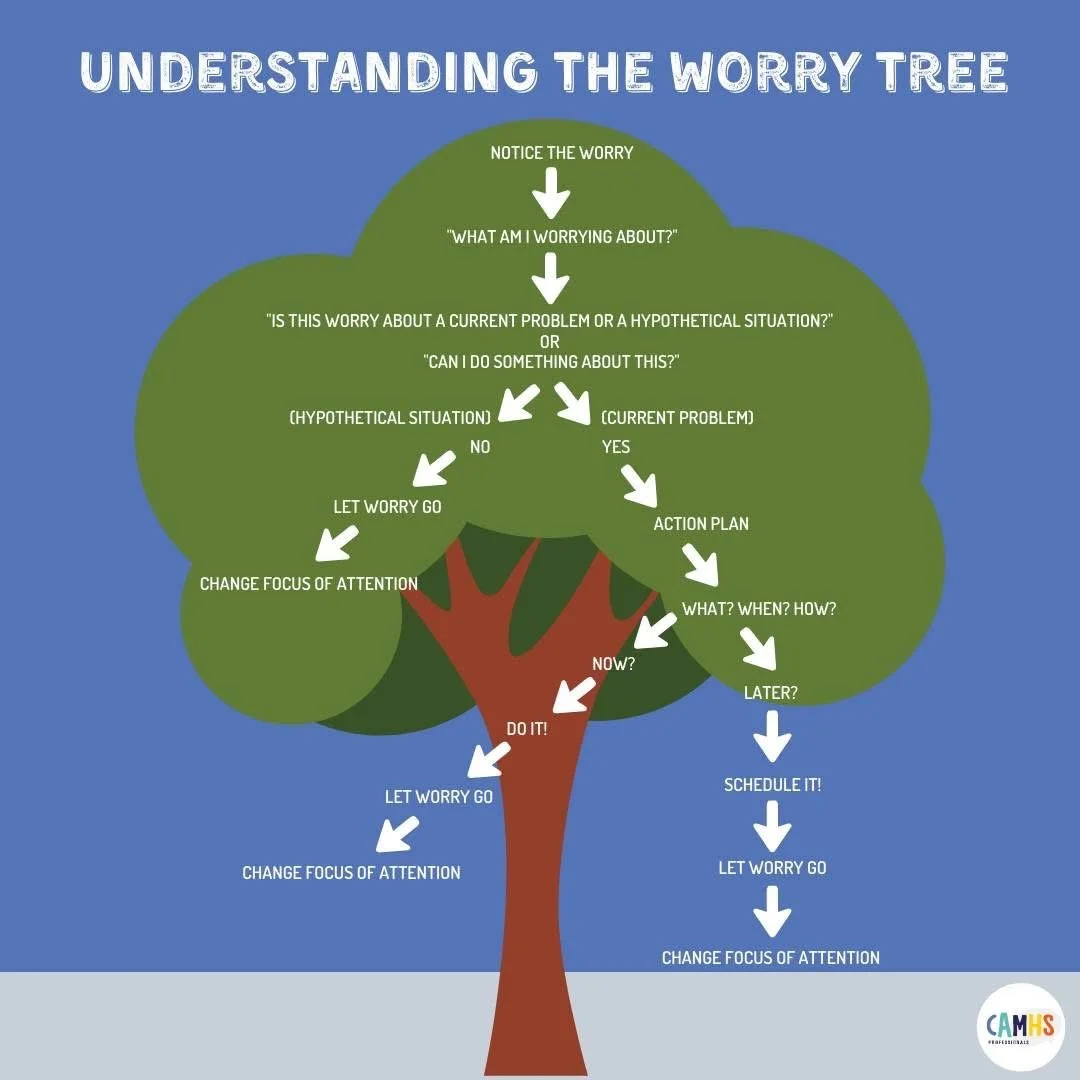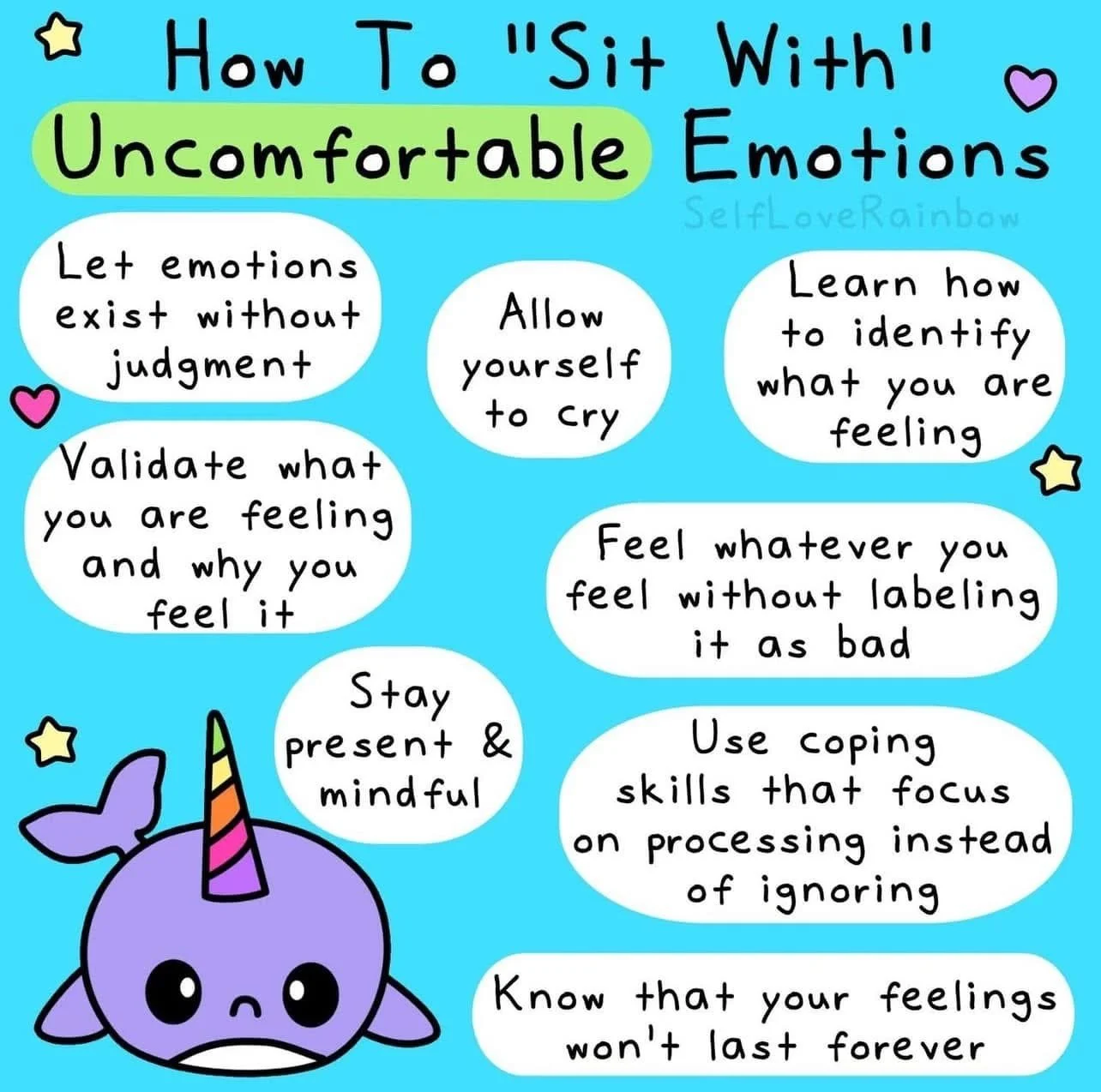Navigating Your Anxiety Iceberg
Picture anxiety like an iceberg. What you see above the surface are the behaviors—racing heart, avoidance, or irritability. But the bulk of anxiety lies beneath the surface: unprocessed emotions, unspoken fears, or unresolved stress. If you don’t address them, they grow and compound, just like an iceberg.
The Hidden Dangers:
When you avoid emotions, they build up. Ever snapped over something small and thought, “Why did I react like that?” That’s because unresolved feelings underneath finally break through. Your anxiety iceberg grows, threatening to sink your mental ship.
How to Manage Your Anxiety Iceberg:
Get Curious About Your Emotions – Identify the root causes of your anxiety.
Practice Emotional Awareness – Check in with yourself and acknowledge your feelings.
Develop Healthy Coping – Use breathing exercises, journaling, or physical movement to release tension.
Practice Mindfulness – Stay grounded in the present moment, letting go of spiraling thoughts.
Seek Support – Therapy can provide you with tools to regulate your emotions effectively.
Bottom Line:
Your anxiety iceberg doesn’t have to sink you. By acknowledging and addressing your emotions, you can prevent it from growing and take control of your well-being.
Need help navigating your anxiety iceberg? TDT Counseling Services is here to support you. 🌊
Boundary Issues? No Thanks, I Like My Sanity Intact 🚧
Let’s talk boundaries—aka your personal VIP rope that keeps the wrong energy out and protects your peace. Did you know that 67% of people struggle to say "no" (University of California, San Francisco)? And guess what? Chronic people-pleasing can lead to higher stress, resentment, and burnout (American Psychological Association).
Boundaries aren’t just a nice idea; they’re a necessity—for your mental health, relationships, and yes, even with your adversaries. They’re not about shutting people out; they’re about making it clear what you will and will NOT tolerate.Think of them as safeguards that protect your time, energy, and emotional well-being.
Setting Boundaries = Self-Respect. Maintaining Boundaries = Non-Negotiable.
🛑 Setting them is one thing. Enforcing them? That’s the real challenge.
Gray areas = invitations for boundary violations. When you let people cross your line in the sand without accountability, you’re teaching them that your boundaries are optional. Spoiler alert: They’re not.
From emotional to physical, workplace to family, boundaries exist for a reason. They’re not selfish; they’re self-care. The clearer you are, the more respect you demand—not just from others, but from yourself.
Let’s Talk Boundaries!
Need support in setting (and keeping) boundaries? Let’s tackle it together—TDT Counseling Services is here for you.
“You Don’t Belong Here” – Oh Yes, You Do!
Ever feel like you’re faking it and everyone’s about to find out? Welcome to Imposter Syndrome, the brain gremlin that 70% of people experience at some point in their lives (International Journal of Behavioral Science). That means you’re not alone—at all. Even the most successful people have moments of doubt.
But here’s the kicker: Imposter Syndrome isn’t reality. It’s bad mental PR.
You didn’t stumble into success. You worked hard and made sacrifices to get where you are. So why is your brain acting like you just snuck into a VIP party without an invite? Newsflash: YOU. BELONG. HERE.
Flipping the Script on Imposter Syndrome
🧠 Reverse Your Thinking – If your brain says, “I don’t deserve this,” flip it to “I worked for this.” If it says, “I’m not good enough,” reframe it to “I am capable and learning.” Positive opposites = game changer.
💙 Go to a Place of Self-Compassion – Nobody is perfect (even the ones who pretend to be). Every expert was once a beginner. Mistakes? They don’t make you a fraud—they make you human.
🏃 It’s a Marathon, Not a Sprint – Success isn’t about never messing up. It’s about learning, adapting, and growing. Instead of fearing new challenges, embrace them—this is where the magic happens.
🚀 Be the Master, Not the Imposter – Instead of seeing yourself as a phony, see yourself as a student of success. Every challenge is a lesson, every setback is a setup for growth.
Bottom Line? You Deserve This.
It’s time to stop waiting for permission to own your success—because guess what? No one is coming to hand it to you. You already earned it.
Need help kicking Imposter Syndrome to the curb? Let’s tackle it together—TDT Counseling Services has your back.
🧠✨ Manifestation: Not Magic, Just Neuroscience 🧠✨
Think manifestation is just wishful thinking? Think again! Studies show that people who write down their goals and visualize success are 42% more likely to achieve them. Why? Because manifestation is a brain-training exercise, not a fantasy. It’s about rewiring your nervous system to believe in something before it happens—so you’re ready to make it happen.
How to Manifest Like a Boss (The Science-Backed Way)
🔥 1. Declare It & Claim It – Say what you want out loud (yes, really). Get specific and own it!
🔥 2. Visualize the Steps, Not Just the Outcome – Your brain needs a map, not just a destination. Break your vision into small, attainable goals and train your mind to take action. Create a “vision board,” make a plan, and let your neurons fire in the right direction – this is also known as procedural memory (encoded and automatic).
🔥 3. Feel It in Your Body – Your brain cannot tell the difference between what is real and what you vividly imagine. So, engage all your senses- all five of them! Picture yourself winning, succeeding, doing the work. Remember: Fear is just reverse manifestation—flip the script! There is power in objectivity, if you can’t see yourself doing it just yet, imagine someone you admire doing it and eventually inviting you to step up.
🔥 4. Do The Damn Thing – You owe yourself the effort. Manifestation without action is just daydreaming. Fear is often a leading factor leading us to not pursue our dreams, remember fear is just relabeled excitement. No quitting. No impatience. You never know when you’re on the brink of success.
🚀 Manifestation isn’t magic—it’s mind and somatic training. So, what’s your next move? Let’s make it happen. Need help shifting your mindset? TDT Counseling Services is here for you.
Control What You Can: Stop Fighting the Rip Tide
Ever felt completely overwhelmed by stress, only to realize later that half of it was over things you couldn’t control anyway? You’re not alone. A staggering 85% of the things we worry about never actually happen (Leahy, 2005). Yet, we spend an average of 80% of our mental energy focusing on things beyond our control—traffic, other people’s opinions, the weather, global events, or whether that person ever texted back. Meanwhile, the things we can control? They get shoved to the back burner.
Why We Try to Control the Uncontrollable
When we feel powerless, our instinct is to fight for control—but that’s like swimming against a rip tide in the ocean. The harder we struggle against it, the more exhausted and defeated we become. Instead, the smartest move is to stop fighting the current and swim parallel to the shore—finding a safe route where we actually have power.
The truth is, in every situation, we have some level of control. It might not be over the external factors, but we always have control over our perspective, our choices, and our actions.
What You Can Actually Control (Hint: It’s You!)
✅ Your Thoughts – You get to choose how you frame a situation. Is it an obstacle or a challenge? A failure or a lesson? Your mindset shifts everything.
✅ Your Reactions – Other people’s actions? Out of your control. But how you respond? That’s 100% within your power.
✅ Your Choices – You may not control every circumstance, but you always have choices—whether it’s setting boundaries, shifting your focus, or walking away from what no longer serves you.
✅ Your Perspective – Sometimes, changing how we see a situation is the most powerful control we can reclaim.
Taking Back Control = Feeling Fulfilled
When you focus on what you can control, something amazing happens—you stop feeling defeated and exhausted and start feeling empowered and successful.
💡 Want to test this out today?Ask yourself:
🔹 What’s one thing stressing me out right now?
🔹 What part of this do I actually have control over?
🔹 What action can I take to shift my focus to that?
Your power isn’t in changing the world around you—it’s in changing how you navigate it. So today, take control of the one thing that truly belongs to you: YOURSELF
👉 Need help shifting your mindset and reclaiming control? TDT Counseling Services is here to help! Let’s start the journey together.
Fear & Excitement: Same Sensation, Different Label
Have you ever noticed that fear and excitement feel weirdly similar? Your heart races, your palms sweat, your stomach does somersaults. That’s because fear and excitement trigger the exact same physiological response —it’s your brain that decides which label to slap on it!
Fear hijacks your brain, convincing you that discomfort means danger. But what if you could relabel that fear as excitement instead? Spoiler alert: You totally can!
Same Sensation, Different Experience
🔹 Scenario 1 – The Fear Response:
You’re about to give a big presentation at work. Your hands are clammy, your pulse is rapid, and your stomach is in knots. Your brain screams:
What if I mess up?
What if I forget everything?
Everyone will think I’m incompetent!
Physically, your body is in full fight-or-flight mode —shaky hands, dry mouth, increased heart rate, tense muscles.
🔹 Scenario 2 – The Excitement Response:
You’re at a concert, waiting for your favorite band to take the stage. Your hands are clammy, your pulse is rapid, and your stomach is in knots. Sound familiar? But this time, your brain says:
This is amazing!
I can’t wait to hear my favorite song live!
Same bodily sensations, completely different emotional interpretation. The only real difference? The label your brain assigns.
Flip the Script with a Confidence Anchor
So, how do you take control when fear tries to hijack your excitement? Enter the Confidence Anchor. This simple 4-step trick helps you reframe fear into excitement so you can take charge of the moment instead of letting it control you.
4 Easy Steps to Access Your Confidence Anchor:
1️⃣ Identify what makes you nervous — What’s the fear? What’s your brain saying?
Example: "I’m afraid I’ll embarrass myself during my speech."
2️⃣ Find what excites you about the situation — What’s something positive about it?
Example: "I’m excited to share my ideas and connect with people."
3️⃣ Close your eyes and bring the excitement to life — Imagine it in vivid detail. Feel the energy, hear the applause, see yourself succeeding.
Engage all five senses —the sights, sounds, smells, textures, and even tastes tied to the moment.
4️⃣ With your eyes still closed, say out loud: "I’m excited."
No BUT—just "I’m excited." Let the excitement override the fear.
By following these steps, you take power over your fears, shifting them from something that holds you back to something that propels you forward.
Your Brain is Your Most Powerful Tool—Use It!
Fear and excitement feel identical, so why not choose excitement? Next time your heart starts racing and your palms sweat, pause and ask yourself "Am I scared, or am I actually just excited?" Reframe the moment, anchor in confidence, and step boldly into your next big opportunity. Because you’ve got this.
Ready to reframe fear into empowerment? Let’s work through it together— TDT Counseling Services is here to help!
Mindful March: Better Late Than Never!
Okay, so maybe we are already one week into March, but who says you can’t jump in and make the rest of it count? Mindful March is all about using small, intentional actions to boost your mental health, self-esteem, and overall life satisfaction. And guess what? You’ve got nothing to lose—except maybe some stress, negativity, and self-doubt.
Why Mindfulness? Because You Deserve to Feel Good
Mindfulness isn’t just about meditation and deep breaths (although, those help too). It’s about becoming aware of how you think, react, and engage with the world around you. When you make small mindful shifts, you create space for happiness, fulfillment, and overall improved well-being. And let’s be honest—who wouldn’t want that?
Here’s how to start:
✔ Take a break from social media (except for this blog, of course! 😉) – You’d be amazed how much your mood improves when you’re not doom-scrolling.
✔ Check your inner dialogue – Notice how you talk to yourself. If it’s mostly negative, swap it for affirmations like "I am capable," "I am enough," or "I deserve happiness."
✔ Shift your focus to what really matters – Instead of stressing over things beyond your control, center your energy on what brings you joy, growth, and purpose.
One Month? How About a Whole Year of Badassery?
Mindful March is a great jumpstart to a more intentional life, but why stop there? What if you turned these daily challenges into habits that elevate you for the entire year?
If you're ready to level up your mental health and mindset, TDT Counseling Services is here to help! Whether you need guidance, support, or just someone to keep you accountable, let’s work together to make this your best, most fulfilled year yet.
Give it a shot—what do you have to lose?
👉 Reach out today and let’s get started!
How Stress Messes With Your Body (And What to Do About It!)
We all know stress isn’t great, but did you know your body reacts to stress like you’re being chased by a bear—even if the "bear" is just your overflowing inbox or that awkward text you sent? Yep, stress isn’t just in your head—it affects your whole body.
Let’s break down how stress impacts different parts of you and what you can do to keep it from taking over!
Stress and Your Body: A Head-to-Toe Takeover
🧠 Brain: Stress can shrink your hippocampus (the part of your brain responsible for memory). Ever walked into a room and forgotten why you’re there? Blame stress!
Chronic stress increases cortisol levels, which can impair decision-making and emotional regulation. No wonder we make questionable late-night online purchases when we’re overwhelmed!
❤️ Heart: Stress can raise your blood pressure and increase the risk of heart disease. Your heart doesn’t like it when you’re constantly in fight-or-flight mode!
Studies show that people with high-stress jobs have a 23% increased risk of heart disease. (So yes, taking a break is good for your heart!)
🍔 Gut: Ever get "butterflies" in your stomach before a big event? That’s stress talking! Stress can cause bloating, indigestion, and even make you crave junk food.
90% of serotonin (your feel-good neurotransmitter) is produced in your gut! So, a stressed stomach can mean a stressed mood.
💪 Muscles & Joints: Stress makes your muscles tighten up (hello, neck and back pain!). Long-term stress can lead to chronic pain and tension headaches.
If you constantly feel like you’ve been hit by a truck, it might not be your mattress—it could be stress!
🛌 Sleep: Stress and sleep don’t mix well. Racing thoughts? Middle-of-the-night wake-ups? Stress is likely the culprit.
35% of adults report getting less than the recommended 7 hours of sleep due to stress.
How to Manage and Reduce Stress
The good news? You don’t have to let stress take over your body like an uninvited guest! Here’s how to kick it to the curb:
✅ Acknowledge It: The first step to managing stress is recognizing when it’s creeping in. Pay attention to tension in your body, your thoughts, and changes in mood.
✅ Move Your Body: Exercise helps burn off excess stress hormones. Whether it’s a walk, yoga, or dancing in your kitchen, get moving!
✅ Deep Breathing & Mindfulness: Your nervous system loves deep breaths. Try box breathing: inhale for 4 seconds, hold for 4, exhale for 4, hold for 4—repeat!
✅ Fuel Your Body Right: Ditch the stress-eating snacks (well, most of them) and fuel up with nutrient-dense foods that support mood and energy.
✅ Prioritize Sleep: A bedtime routine and limiting screen time before bed can help your brain wind down.
✅ Self-Care & Problem-Solving: Stress often comes from things feeling out of control. What small, actionable steps can you take to problem-solve? And don’t forget—self-care isn’t selfish; it’s necessary!
Bottom Line: Stress is sneaky, but you don’t have to let it run the show. Take care of your mind and body, and remember your well-being matters more than your to-do list!
Feeling overwhelmed? Let’s work through it together. TDT Counseling Services is here to help
Your Mental Health Is More Important Than…
In a world that constantly demands our time, energy, and attention, it’s easy to feel obligated to fill certain roles—whether as a parent, partner, employee, friend, or caregiver. We put others' needs before our own, strive to meet unrealistic expectations, and worry about how we present ourselves to the world. But at what cost?
We live in a society that often values productivity over rest, perfection over authenticity, and approval over self-acceptance. We’re taught that:
🔹 Prioritizing our own needs is selfish.
🔹 Our worth is measured by likes, followers, or external validation.
🔹 Showing emotions is a sign of weakness.
🔹 We should "just be normal."
But here’s the truth—the only true "normal" in life is a cycle on the washing machine.
Your Mental Health Matters more than:
✔ The pressure to be perfect.
✔ The need to please others at the expense of yourself.
✔ The fear of showing your true emotions.
✔ The number of followers or likes you have.
✔ The unrealistic expectations society places on you.
Taking care of your mental health isn’t selfish—it’s necessary. There is a fine line between being selfish and being selfless, and that line is self-care. When you care for yourself, you become a better version of you—one who can love, grow, heal, and thrive. And if you don’t have a strong relationship with yourself, how can you truly build strong relationships with others?
Ways to Make Your Mental Health a Priority
🌿 Set Boundaries – Say no when you need to, without guilt.
🌿 Prioritize Rest – Sleep, downtime, and breaks are essential.
🌿 Practice Self-Compassion – Speak to yourself as you would a friend.
🌿 Limit Social Media Comparison – Your worth isn’t measured by likes or followers.
🌿 Express Your Emotions – Feelings are meant to be felt, not suppressed.
🌿 Seek Support – Therapy isn’t a last resort; it’s a tool for growth and healing.
🌿 Engage in Activities That Bring You Joy – Do things that make you feel alive, not just productive.
Be bold. Be brave. Be attentive. And most of all, be kind to yourself. Your mental health truly matters—and when you prioritize it, you’re not just taking care of yourself, but also creating space for deeper connections, greater fulfillment, and a healthier, happier you.
Need support in making your mental health a priority? TDT Counseling Services is here to help. Contact us today!
The 8 Stages of Burnout You Can No Longer Ignore—And How to Recover
Burnout isn’t something that happens overnight—it develops in stages, slowly draining your energy, motivation, and well-being. If left unaddressed, it can severely impact your mental and physical health. Recognizing the signs early can help you take steps to regain balance before burnout takes over.
The 8 Stages of Burnout
1. Excessive Drive & Overcommitment
- You feel the need to prove yourself, taking on more responsibilities than you can handle.
- Prevention Tip: Set realistic goals and establish healthy boundaries between work and personal life.
2. Neglecting Self-Care
- You prioritize productivity over rest, neglecting sleep, nutrition, exercise, and relaxation.
- Solution: Schedule downtime just like any other commitment. Prioritize meals, movement, and sleep.
3. Denial of Emerging Problems
- Stress starts impacting your mood and relationships, but you brush it off as temporary.
- Check-in: Ask yourself, Am I constantly feeling drained or irritable? Acknowledge the warning signs early.
4. Withdrawal from Friends & Activities
- You start isolating yourself, skipping social events, and losing interest in hobbies.
- Reconnect: Even if it’s small, engage in activities that bring you joy and maintain social connections.
5. Behavioral Changes
- Increased irritability, impatience, or difficulty concentrating become more noticeable.
- Address It: Keep a journal of mood shifts and triggers to recognize patterns and make adjustments.
6. Depersonalization & Emotional Numbness
- You feel detached from your work, relationships, or even yourself—like you’re running on autopilot.
- Recenter: Practice mindfulness, deep breathing, or grounding exercises to reconnect with the present.
7. Apathy & Loss of Motivation
- Work or daily responsibilities feel meaningless, and you struggle to find motivation.
- Realign Your Purpose: Revisit what excites you and consider small changes that bring fulfillment.
8. Depression & Exhaustion
- Chronic fatigue, hopelessness, and emotional depletion set in, making even small tasks overwhelming.
- Seek Support: If burnout leads to persistent sadness or exhaustion, therapy can help you navigate recovery.
How to Prevent & Recover from Burnout
✔ Prioritize Self-Care – Rest, nutrition, movement, and hydration are non-negotiable.
✔ Set Boundaries – Learn to say no and protect your time.
✔ Take Breaks – Micro-breaks during work can help maintain energy and focus.
✔ Engage in Joyful Activities – Make time for hobbies and connections that refill your energy.
✔ Talk About It – Seeking support from a therapist can help process stress and build coping strategies.
Burnout isn’t a sign of weakness—it’s a signal that something needs to change.If you're feeling overwhelmed, let’s work together to restore balance and well-being. Contact TDT Counseling Services today to start your recovery journey!
Emotional Identification & Regulation: Understanding the Full Spectrum of Feelings
Recognizing and regulating our emotions is a fundamental part of mental well-being, yet studies show that 36% of people struggle to identify their emotions accurately (Hills & Bird, 2022). Difficulties in emotional identification can lead to increased stress, anxiety, and difficulty in communication.
Understanding Umbrella Emotions
Sadness and anger are two of the most commonly expressed emotions, but they are what we refer to as “umbrella emotions” —broad categories that encompass multiple underlying feelings. For example:
Sadness might include feelings of loneliness, disappointment, hopelessness, or guilt.
Anger can stem from frustration, resentment, hurt, or even fear.
When we only acknowledge the most apparent emotion, we risk neglecting the deeper, more specific feelings contributing to our distress. By pinpointing all the emotions we are experiencing, we gain greater self-awareness and can address them more effectively.
Tips for Identifying Your Emotions:
Use an Emotion Wheel – Tools like the Plutchik Wheel of Emotions or other emotion charts can help break down broad emotions into more specific ones.
Check in with Your Body – Physical sensations (tightness in the chest, clenched jaw, fatigue) can provide clues about what you’re feeling.
Journaling & Reflection – Writing down your thoughts and experiences can help clarify what emotions are present.
Ask Yourself "Why?" – If you feel anger, for example, ask yourself what triggered it. Was it disappointment? Betrayal? Frustration?
Practice Mindfulness – Slowing down and observing your emotions without judgment can help you better recognize what you’re feeling in the moment.
Why Emotional Identification Matters
✔ Reduces emotional overwhelm
✔ Improves communication in relationships
✔ Develops better coping strategies
✔ Strengthens emotional resilience
Taking time to understand your emotions is a powerful step toward emotional regulation and overall mental wellness. If you need additional support in this area, therapy can provide valuable guidance.
Would you like to explore emotional identification further? Let’s work together to navigate your emotions with clarity and confidence. Contact TDT Counseling Services today!
🚿 Hot or Cold? The Mental & Physical Benefits of Your Shower Choice! 🚿
Did you know your shower temperature can impact your mental and physical well-being? Here’s how:
🔥 Hot Showers – Relax & Unwind
✅ Reduce stress by lowering cortisol levels
✅ Improve sleep quality (people who take warm showers 90 minutes before bed fall asleep faster!)
✅ Relax muscles & soothe joint pain
✅ Alleviate respiratory issues by opening airways
✅ Improve circulation & help with headaches
❄️ Cold Showers – Energize & Strengthen
✅ Boost immunity (cold exposure can increase white blood cell count!)
✅ Increase energy & alertness
✅ Improve circulation for heart health
✅ Speed up muscle recovery (ideal after workouts!)
✅ Increase testosterone levels in men
✅ Strengthen emotional resilience by reducing stress
So, what kind of shower are you taking? 🚿
DOSE Your Brain for Better Mental Health
Your brain's DOSE of neurotransmitters—Dopamine, Oxytocin, Serotonin, and Endorphins—plays a crucial role in your mood, motivation, and overall mental well-being. Let’s break it down:
🔹 Dopamine (The Reward) – Boosts motivation & pleasure
📊 Low levels are linked to depression & procrastination
✨ Increase it with: small goals, exercise, music, and celebrating wins
🔹 Oxytocin (The Love Hormone) – Enhances connection & trust
📊 Higher oxytocin = lower stress & anxiety
✨ Increase it with: hugs, social bonding, acts of kindness, and petting animals
🔹 Serotonin (The Mood Stabilizer) – Regulates mood & happiness
📊 80-90% of serotonin is produced in the gut
✨ Increase it with: sunlight, healthy diet, mindfulness, and gratitude
🔹 Endorphins (The Natural Painkiller) – Reduces pain & boosts joy
📊 Exercise can increase endorphins by 30%
✨ Increase it with: laughter, dark chocolate, exercise, and deep breathing
By intentionally boosting your DOSE, you can minimize stress, anxiety, and depression while improving your daily mental health. Try incorporating these small habits into your routine—your brain will thank you!
The 5-Second Rule: A Simple Hack for Motivation 🚀
Created by Mel Robbins, the 5-Second Rule is a simple yet powerful tool to overcome hesitation and take action. When you feel stuck, follow these steps:
1️⃣ Recognize the moment
2️⃣ Count down from 5 (like a rocket launching!)
3️⃣ Take immediate action
4️⃣ Keep the momentum going
Why It Works:
✅ Moves your body before your mind talks you out of it
✅ Retrains your brain to break hesitation patterns
✅ Beats procrastination
✅ Boosts productivity and confidence
Next time motivation feels out of reach, count down and launch into action! 🚀
Your Thoughts Matter: The Power of Reframing
Did you know that how you think directly impacts how you feel? Research shows that cognitive reframing—actively shifting your perspective—can significantly improve emotional well-being. Studies suggest that individuals who practice reframing experience a 23% reduction in stress levels and greater emotional resilience when facing challenges.
In therapy sessions, we often discuss the power of perspective. When faced with stressors, difficult emotions, or conflicts, our initial thoughts can sometimes magnify negativity. However, by changing the narrative, we can change how we feel. Reframing helps us shift from self-doubt to self-compassion, from fear to confidence, and from frustration to opportunity.
Make it a daily habit—when you catch yourself in a negative thought spiral, pause and flip the script. Challenge those thoughts, find a new perspective, and embrace a mindset that serves you better. Your thoughts shape your reality, so why not make them work in your favor?
Give it a try today—because your thoughts truly matter.
Response vs. Reaction: The Power of the 90-Second Pause
There’s a huge difference between responding and reacting, and that difference can transform how we handle stress, conflict, and challenges.
🔹 Reacting is impulsive and emotional—it often comes from a place of defensiveness, frustration, or fear. It’s a quick attempt to end the situation, but it often makes things worse.
🔹 Responding is thoughtful and intentional—it allows us to acknowledge, address, and resolve the issue in a way that leads to positive outcomes.
💡 The 90-Second Pause: Your Key to Responding Instead of Reacting
Before acting, pause for 90 seconds and:
✔️ Take a deep breath (or two) to regulate yourself
✔️ Resist the urge to respond immediately
✔️ Identify what you’re feeling and why
✔️ Put ego aside—consider other perspectives
✔️ Think through potential outcomes
⏳ There’s a thin line between pausing and avoiding—the goal is not to escape but to give yourself the clarity needed to come back and handle things effectively.
When we respond, we stay in control of ourselves and the situation. When we react, we often escalate the problem. Choose to respond. Choose self-awareness. Choose growth.
Utilizing Your Worry Tree
Accessing Your Worry Tree: Break Free from the Cycle of Overthinking
Did you know that 85% of what we worry about never actually happens? Yet, worry can feel overwhelming—especially when we don’t know how to sort through it effectively. Instead of getting lost in rumination, use the Worry Tree to guide your thoughts and take action where you can.
How to Use the Worry Tree:
🔹 Identify the worry – What exactly are you worried about? Where is it coming from? Name it.
🔹 Is this an active problem or a hypothetical “what if”? – If it’s hypothetical, let it go. If it’s real, keep going.
🔹 Do I have control over this? – If yes, take action. If not, release it—worrying won’t change the outcome.
🔹 What action needs to be taken? – Make a plan, set small steps, and tackle it mindfully.
🔹 Let go of what you can’t change. – There is nothing to gain from holding onto things beyond your control.
Shift your focus from worry to improvement. As my grandmother always said, “Don’t worry over something until you have to worry about it.”
Worry does not equal preparation. Instead, build confidence in your ability to handle challenges as they come. You are capable, resilient, and in control of your response.
Mental Health Myths & Facts: Let’s Break the Stigma
Misinformation about mental health fuels stigma and creates harmful narratives about those who struggle. It’s time to challenge these myths and replace them with facts. Stand strong. Stand together. Let’s rewrite the story.
🚫 MYTH: Mental illness is a sign of weakness.
✅ FACT: Mental health struggles have nothing to do with strength. They are real medical conditions, just like diabetes or heart disease. Seeking help is a sign of courage, not weakness.
🚫 MYTH: People with mental health conditions are dangerous.
✅ FACT: The vast majority of individuals with mental health conditions are not violent. In fact, they are more likely to be victims of violence rather than perpetrators.
🚫 MYTH: Therapy is only for people with “serious” problems.
✅ FACT: Therapy is for everyone! You don’t need to be in crisis to benefit from professional support. Therapy helps with personal growth, self-awareness, and coping with everyday stress.
🚫 MYTH: You can “just snap out of it.”
✅ FACT: Mental health conditions are not choices. No one would tell someone with a broken leg to “just walk it off.” Mental health needs care, treatment, and understanding.
🚫 MYTH: Talking about mental health makes things worse.
✅ FACT: Silence is what makes things worse. Open conversations help people feel seen, understood, and empowered to seek help.
Let’s challenge these outdated beliefs and create a world where mental health is treated with the same respect as physical health. Together, we can replace stigma with understanding.
How to Sit with Uncomfortable Emotions
How to “Sit With” Uncomfortable Feelings
Did you know that most emotions only last about 90 seconds unless we actively feed them with our thoughts? Yet, many of us struggle to sit with discomfort, often trying to suppress, avoid, or judge our feelings. Instead of pushing emotions away, try allowing them to exist without judgment—this is where real healing begins.
✨ Ways to Navigate Uncomfortable Emotions:
💙 Let them exist without judgment – Feelings are not “good” or “bad”; they just are.
💙 Allow yourself to cry – Tears release stress hormones and can be deeply healing.
💙 Validate your feelings – You don’t need a “good enough” reason to feel how you feel. Your emotions are real and valid.
💙 Stay present & mindful – Focus on the now rather than ruminating on the past or fearing the future.
💙 Identify your emotions – Name what you're feeling; sometimes, clarity alone can bring relief.
💙 Feel without labeling it as adverse – Discomfort doesn’t mean danger. You can experience it without fearing it.
💙 Use coping skills – Try deep breathing, grounding exercises, journaling, or movement.
💙 Remember: Feelings are temporary – No emotion lasts forever. This too shall pass.
Sitting with your emotions is a powerful step toward self-awareness, resilience, and healing. Give yourself permission to feel—you are stronger than you think. 💙
Affirmations for Anxiety Attacks
Managing Anxiety: You Are Stronger Than You Think
Anxiety is one of the most common mental health challenges, affecting over 40 million adults in the U.S. each year—yet, it is highly manageable with the right tools and mindset. When anxiety strikes, grounding yourself with affirmations and deep breathing can make all the difference.
✨ Affirmations to Repeat in Moments of Anxiety:
🌀 I am safe in this moment.
🌀 This feeling will pass.
🌀 I control my body.
🌀 I am resilient and strong.
🌀 I trust myself to pull through.
💡 Helpful Hint for Deep Breathing:
Try this simple yet effective breathing technique:
✔️ Inhale deeply for 4 seconds
✔️ Hold your breath for 8 seconds
✔️ Slowly exhale for 8 seconds, releasing the tension like a deflating tire—imagine the air carrying away your stress and anxiety.
You have the power to regain control, one breath at a time. 💙

